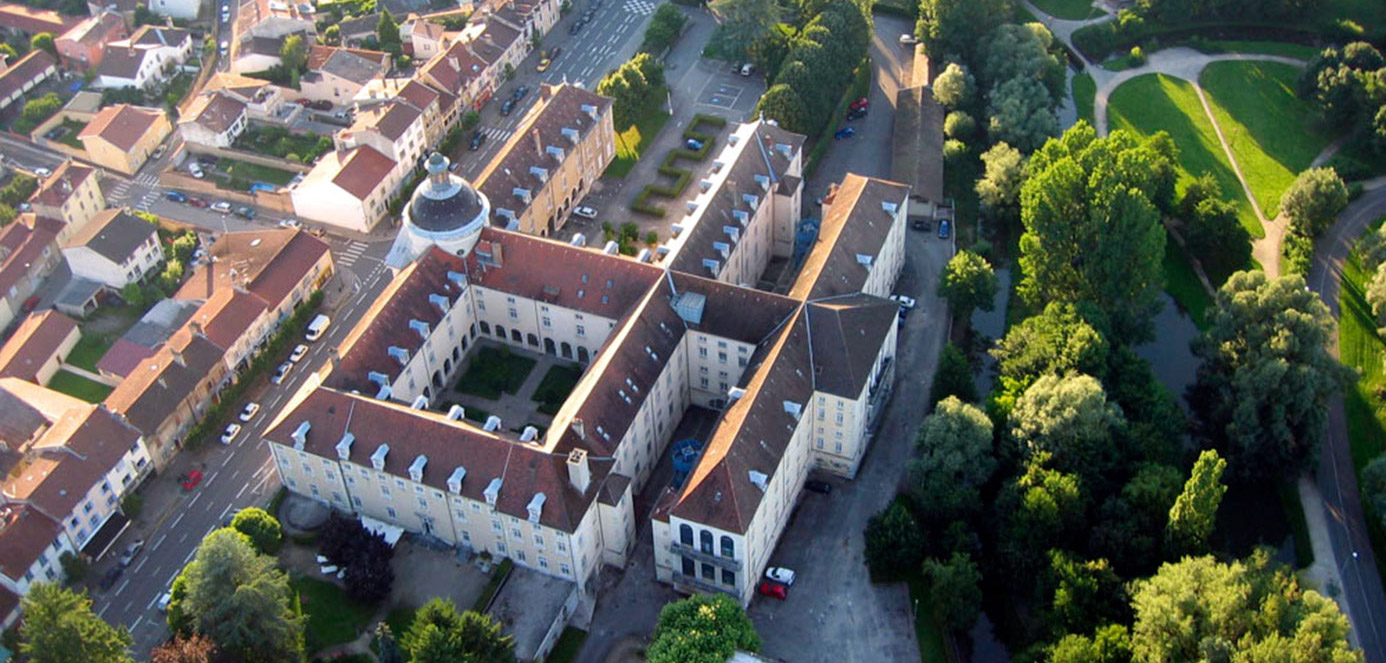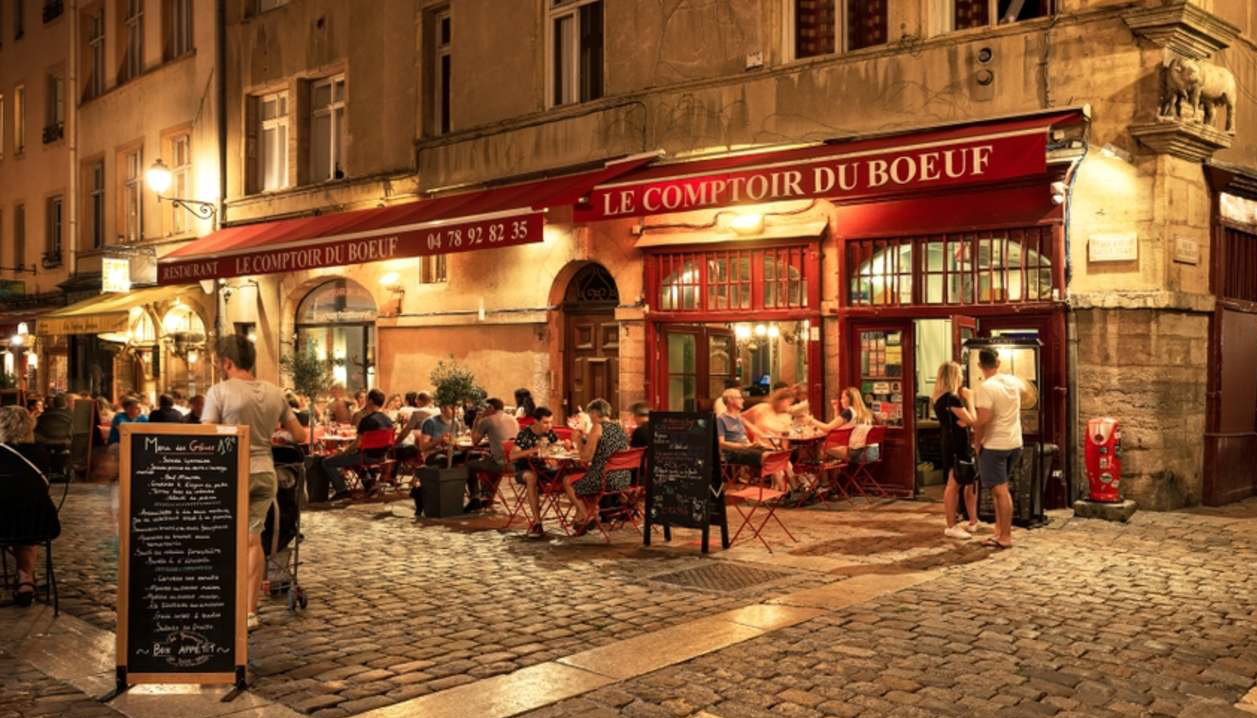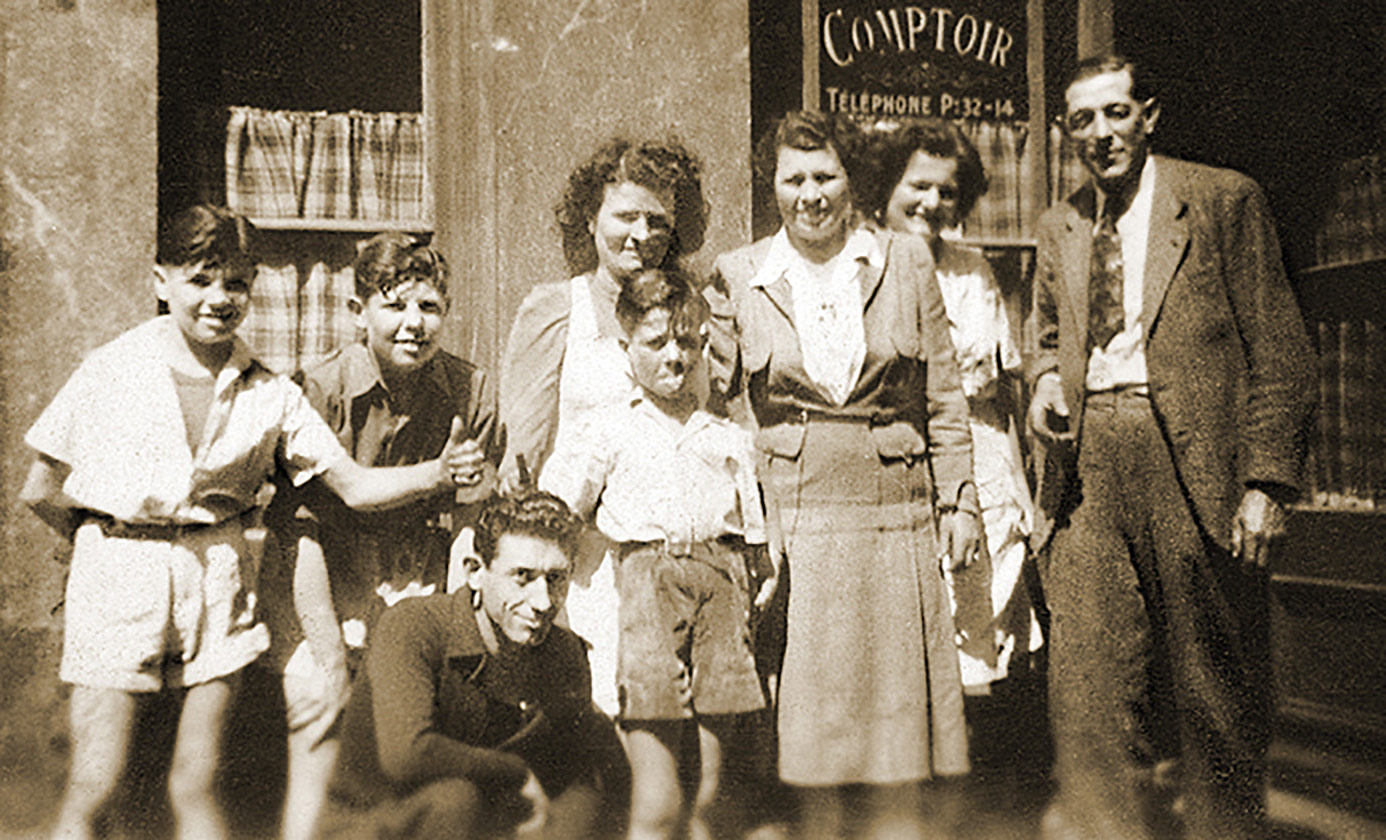
Above: An aerial photo of present-day Bourg-en-Bresse.
Bourg-en-Bresse is a mid-sized French city located in the Auvergne-Rhône-Alpes region, about 70 kilometers northeast of Lyon. Here’s a glimpse of what it’s like today:
Thriving Hub: Bourg-en-Bresse is the capital of the Ain department and the historic Bresse region. It’s a center for administration, commerce, and education, with a branch of the University of Lyon.
Rich History & Culture: Explore the town’s well-preserved historic center, with its architectural gems and vibrant shops.
Foodie Destination: The surrounding agricultural area influences Bourg-en-Bresse’s character. Learn more about some of the region’s culinary delights (and how to make them).
Modern Economy: Metalworking and manufacturing contribute to the city’s economic strength alongside its traditional agricultural base.
Population: As of 2018, Bourg-en-Bresse has a population of around 41,000.

Many of Bourg-en-Bresse’s culinary delights are not unique to the town, but are quintessentially French. The “Bourg-en-Bresse Destinations” website features information and recipes to help you create a few of these authentic delicacies, including “Tarte Bressane” (named for the town), frog’s legs, “Gaudes de Bresse”, “Saffron de Moulin de Riottier”, “Paria et Vincuit”, “Quenelles” and chocolat (in all its states).

Bourg-en-Bresse is also noted for its many farmers’ markets. The main attraction is the Place du Champ de Foire, which comes alive every Wednesday and Saturday morning. Here, you’ll be greeted by rows of stalls overflowing with fresh, seasonal produce. Local farmers proudly display everything from plump tomatoes and crisp lettuces to fragrant cheeses and glistening cuts of Bresse poultry, renowned for its exceptional quality. The lively atmosphere is contagious, with vendors calling out their wares and shoppers chatting and selecting their bounty. This is a fantastic place to immerse yourself in the rich agricultural heritage of the region.

The Royal Monastery of Brou is a stunning religious complex built in the early 16th century. Margaret of Austria, daughter of a Holy Roman Emperor, commissioned the monastery as a final resting place for herself and her loved ones.
The complex includes a church, known as the Église Saint-Nicolas-de-Tolentin de Brou. Built in a flamboyant Gothic style with hints of Renaissance influence, the church boasts an elaborate design and a colorful, glazed tile roof.
Margaret’s purpose for the monastery was inspired by other dynastic burial sites in France. Envisioned as a lasting memorial, the church houses the tombs of Margaret, her husband Philibert, and his mother. These tombs, created by artist Conrad Meit, are remarkably well-preserved compared to many other royal tombs in France.

These farmhouses, likely built around the 18th century, are known for their two-part structure. Made of local stone or cob, they feature a main residence with a living area, kitchen, and bedrooms. Adjoined to this is a secondary building that once housed farm animals, storage, or even a separate gîte for guests. Uniquely, some farmhouses boast beautiful courtyards with summer lounges and outbuildings that reflect the property’s agricultural character. See and learn more.

Poultry, specifically Bresse chicken, reigns supreme in Bourg-en-Bresse. This French town boasts a long history of raising these special birds, dating back centuries. Bresse chickens are renowned for their quality, with strict regulations ensuring they’re raised within the region and under specific conditions. This prized poultry is a point of local pride, even influencing famous chefs, and features prominently on restaurant menus. Bresse chicken is more than just a meal; it’s a symbol of Bourg-en-Bresse’s agricultural heritage and culinary identity.
It’s not hard to see where the significance of poultry to Jacques came from—in his cooking and his artwork. Below are just a few of Jacques’ many poultry paintings. The painting in the center circle holds a special place for us—simply titled “The Cock”. When the Artistry of Jacques Pépin website was launched in 2015, it was one of only four limited edition prints listed on the site and the first to sell out (and be “retired”).


Jacques’ hometown of Bourg-en-Bresse is an hour and a quarter northeast of Lyon. It’s likely that Jacques and his family visited Lyon often. Lyon is known as “the gastronomic capital of the world” and would have had a strong influence on the Pépins.
Learn much more about Bourg-en-Bresse on these sites:
Bourg-en-Bresse Destinations
France This Way
Britannica






Very interesting. My mom (French Canadian, NE USA) followed you for years. My dad was in France during WWII, was in the army band and was honored to play for General Patton. He brought back souvenirs from Heinrich Himmler’s private library. He also brought back a small silver creamer from the Grand Hotel, which I have now. So much history. Thank you for sharing yours!
Good morning. Thank you so much for pointing out our error. I have changed the image.
All the best,
Paul